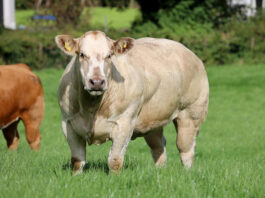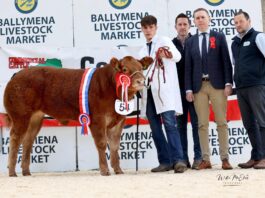The Callan family’s dairy enterprise grew from humble beginnings, with a four-cow herd in the late 1960s, to its current capacity across 2 units with 530 cows and 8 Lely robots, in Co Louth.
The home block has always been steeped in dairying, but in 2010, they also converted their out farm, which they ran as a crop and beef production unit.
On this outblock, they began producing milk in February 2011 with a 20-unit parlour, which became a 30-unit parlour in 2013 and was in place for three seasons until the end of 2016.
In 2016, Sean’s father experienced a farm accident, and the family were “struggling to keep labour on-farm and to get quality labour for milking”.
“We finished up with a good few high cell count cows throughout the backend of 2016. That spurred us on to convert to robotic milking,” he explained during a recent Lely Center Mullingar webinar.
“My father spent a month in hospital, so Pat Farrelly, who has been robotic milking since 2010 and cows are walking up to 2km per day, had an open day that back end. Mum and dad went over to see how the robots were working.”
“We went over a couple of weeks later together as a family. We saw that it was working and thought it could work for us too.”
“So, we made the decision that autumn, and we started working here on the out farm in Christmas 2016 to remove the parlour.”
“Our furthest walk here is 1.6km, and we are on very flat ground. Roadways were good, and we had very little infrastructure to put in.”
Robotic dairying journey
Initially, robotic dairying was the Callan family’s answer to combating labour shortages, but the benefits have been far-reaching.
They began milking with 6 Lely robots in January 2017, and the benefits have been far-reaching, saving two labour units and gaining 100kgs of milk solids per cow.
They now calve down 350/360 spring-calving cows (operate as part of a sync programme, with a peak in recent years with 43 cows in 24 hours) on the 5-robot out block every year and have a split autumn and spring-calving herd of 190 cows with 3 robots on the home block.
“When we began robotic milking, the first three to four months were difficult. We went from starting up four robots on the outblock, and just as we got these running, we started the second farm.”
“It was tough going from the start, but we could see what we were trying to achieve. We have always been believers in putting the right procedure in place and following it.”
“You try to get the best result out of it. So, that was 2017, and it was definitely a learning year. But once we got through the first three months, we could see the light out the other side.”
Compact calving and production
He continued: “We calved everything in here and onto the robots, so it was a case of training everything on for three or four days, but that went on for ten or twelve weeks at the time.”
“Since that, we have condensed our breeding season and bred for seven-and-a-half weeks here last year. Production is up; kgs of solids have increased by 100kgs per cow.”
“We were at about 495kgs before starting with robots and are now at 596kgs sold off-farm here last year.”
“As well as that, since we have put the robots in, we are better able to manage ourselves,” added Sean, who holds a position in yard design at Lely Center Mullingar, having previously worked as an FMS advisor for five years with the firm.
Labour
He explained that robots have given the two farms “time to go out to manage our herds rather than just standing here milking”.
“Profit generated here is done outside the milking parlour,” Sean explained.
At peak, the farm had four full-time staff and four part-time employees, spread between both farms, calving 430 cows.
“On top of this, we are not relying on a contractor for anything really and do our own slurry, fertiliser and silaging, so we cover nearly everything ourselves, except for maize and liming.”
The farm has four full-time labour units across 530 cows in milk, which is two fewer labour units than requirements under its previous system.
“Wages-wise, you will struggle to get anyone to milk cows at the minute for less than €40,000 per year,” he said.
“Put your cover on top of those, that is another €20,000-€25,000, so you do not be long-running into €100,000 per year in labour on a farm of this scale, so it adds up,” he added.
Future
Looking into the future, the Callans intend to maintain cow numbers, having maxed out the milking platform to its potential, install more cubicles for heifers, allow the herd to mature (140 out of 330 are first-calvers on the home block) and push solids to 650kgs per cow, from its current 600kgs, “without much extra concentrates or none ideally”.
Other articles to follow on www.thatsfarming.com



